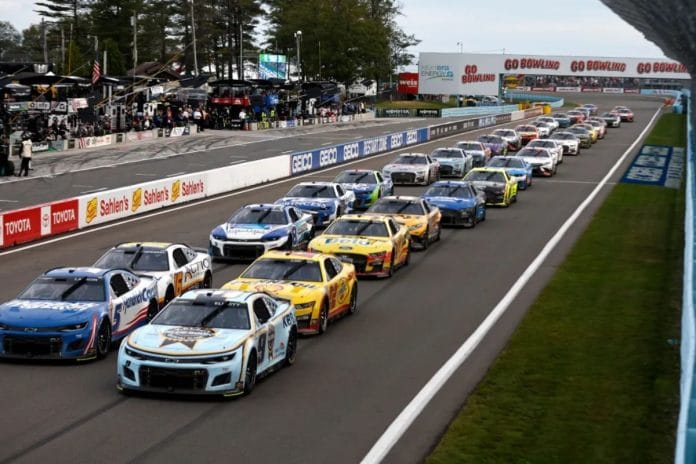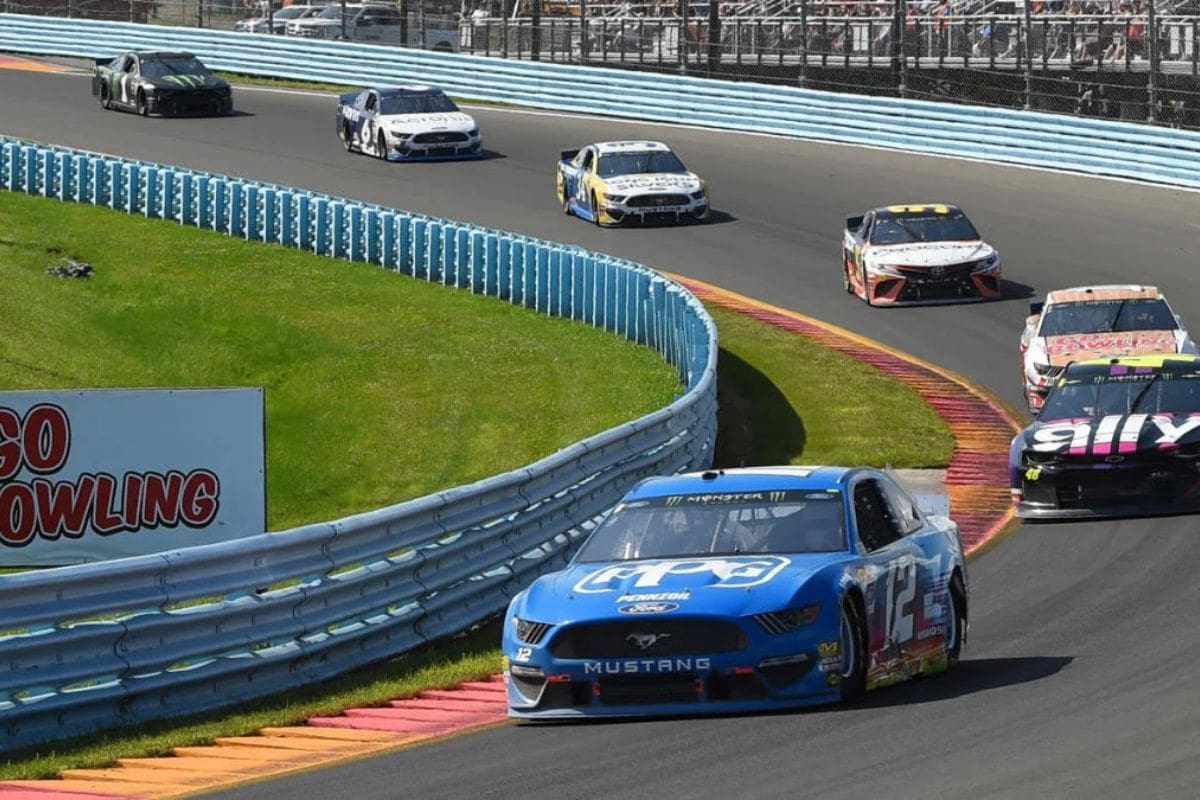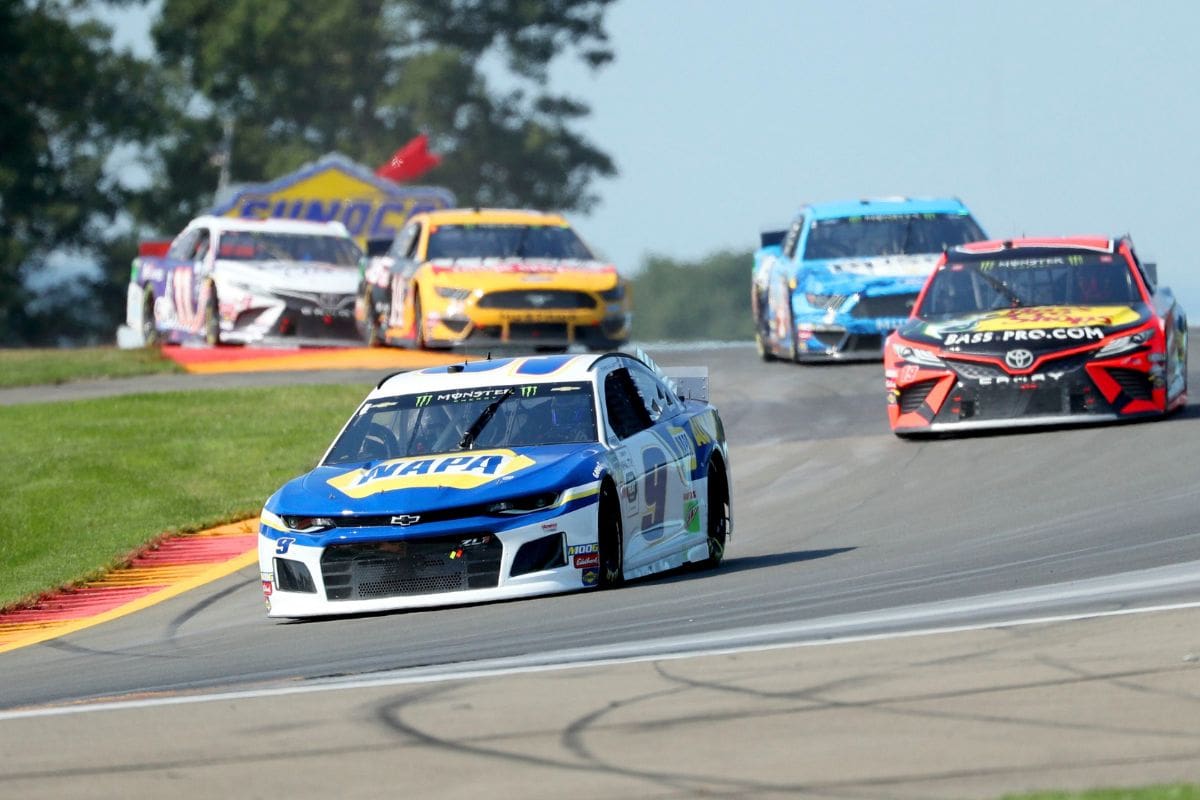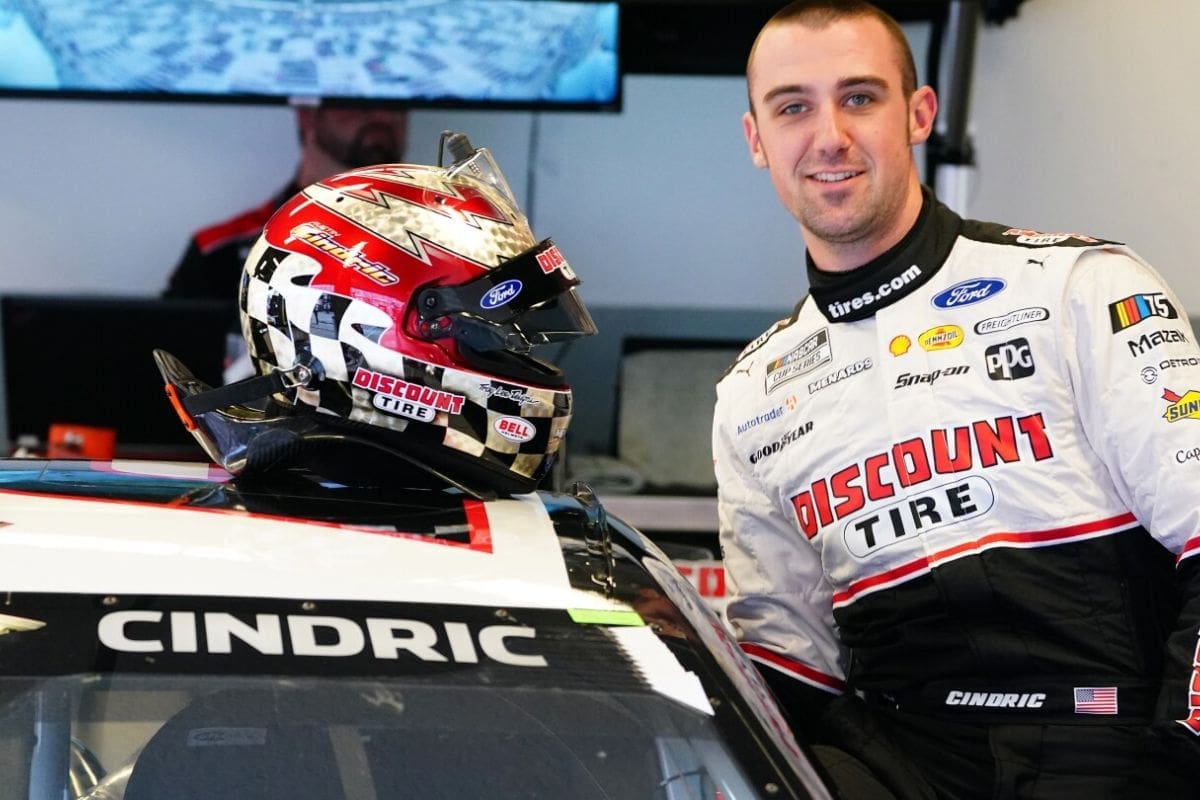Austin Cindric Surprise Lifts the Veil on Challenges in NASCAR: The recent revamp of Watkins Glen poses several notable challenges for NASCAR drivers, as articulated by Austin Cindric. With its complex layout featuring sharp turns and varying elevations, the track demands not only mechanical skill but also tactical insight, particularly in managing a new tire compound that is prone to rapid wear. Cindric’s insights on the necessity of adaptability and effective teamwork highlight the unpredictable nature of racing at this venue. As competitors prepare for the upcoming events, the question remains: how will these factors influence race outcomes and driver strategies?
Key Highlights
- Watkins Glen’s revamped track introduces sharp turns and elevation changes, demanding advanced technical skills from drivers.
- Tire management is crucial, with new compounds leading to significant falloff and influencing pit stop strategies.
- The unpredictable racing dynamics at Watkins Glen create challenges, limiting overtaking opportunities for drivers.
- Austin Cindric emphasizes preparation and adaptability, using past experiences to enhance his race strategy at Watkins Glen.
- Weather conditions and historical performance data are vital for shaping race tactics and driver decision-making.
NASCAR Cup Series Playoffs Head to Watkins Glen
As the NASCAR Cup Series playoffs approach, the spotlight shifts to Watkins Glen International, a road course that presents a unique set of challenges for drivers. Unlike the more traditional oval tracks, Watkins Glen demands a different skill set, where precision and strategy are essential. The layout features sharp turns and elevation changes that test both the technical skill of the drivers and the performance of the cars.
The introduction of a new tire compound adds another layer of complexity to this already challenging venue. This compound is expected to wear off more quickly than previous versions, compelling teams to adopt an approach to tire management. Drivers will need to balance aggressive navigation with the understanding that their tires may not endure the rigors of the race as long as they would prefer.
Austin Cindric, a prominent driver for Team Penske, has voiced concerns that NASCAR’s adjustments may have oversaturated the competition with unforeseen challenges, potentially impacting race outcomes considerably.
“I had a least favorite, but no favorite. I ended up coming in after just four laps when I was supposed to do eight.” -(austin)
In this context, the ability to strategize effectively becomes vital. Teams must analyze tire degradation patterns and adapt their pit stop strategies accordingly. As the playoff atmosphere intensifies, the stakes are higher than ever, and the road course’s intricacies could very well determine which contenders advance.
The impending race at Watkins Glen will not only test the drivers’ adaptability but also their teams’ capacity for real-time decision-making under stress. This confluence of factors guarantees that the race will be one to watch closely for both fans and competitors similarly.
Nothing Can Be Expected
Watkins Glen International, renowned for its unpredictable racing dynamics, is set to challenge drivers in ways that extend beyond mere skill. The complexities of the Next Gen race car exacerbate this unpredictability, particularly due to its noted lack of passing opportunities on the road course. This limitation has prompted NASCAR to investigate groundbreaking solutions, including a new tire compound developed by Goodyear, aimed at enhancing grip and creating more competitive racing conditions.
In theory, the new tire compound is anticipated to generate approximately three ticks of falloff per lap, potentially broadening the scope for overtaking tactics. However, the effectiveness of such innovations remains in question, as evidenced by earlier attempts, such as the option tire strategy during the All-Star race, which failed to deliver the expected results. The historical context of these experiments suggests that while technological advances can promise improved performance, the inherent unpredictability of racing frequently mitigates their impact.
Drivers must navigate not only the technical challenges presented by the track and vehicle but also the psychological demands of fluctuating race dynamics. As they prepare for the upcoming race, competitors will need to adopt a mindset of adaptability.
Given the ever-shifting conditions at Watkins Glen, the ability to respond to unexpected developments—be it tire performance, weather changes, or tactical decisions from competitors—will be essential. Ultimately, success at Watkins Glen relies on the synergy of skill, planning, and an acceptance of the uncertain nature of motorsport.
Changes to Watkins Glen Track Surface
Considerable modifications to the track surface at Watkins Glen International have been implemented, particularly the replacement of curbs in Turn 2 with rumble strips. The decision to introduce rumble strips instead of traditional curbs provides a more forgiving surface, potentially reducing the risk of incidents when drivers unknowingly exceed track limits.
“So the bus stop was the same as the tire tests. Basically, the elimination or the flattening of the first curb and the stop. So that was the same.” -(austin)
Austin Cindric’s observations regarding the bus stop section further illuminate the nature of these changes. He noted the flattening of the initial curb, an adaptation consistent with tire tests conducted prior to the modifications. Such adjustments indicate NASCAR’s commitment to refining the racing experience by balancing speed with safety.
In addition, Cindric mentioned the prospect of extra rumble strip sections being integrated into the 2.45-mile track, suggesting a continued evolution of the surface that could influence competitive strategies.
“So they added more, and I think they’ll even add more after the OEM tests. So I don’t really have a reason for what that will be like going into the race weekend. But otherwise, I think it’s pretty new. I’d say traditionally it looked like five years ago at Watkins Glen and every year before, but that was the intent to keep us more on the other side of the curb on turn 1.”-(cindric)
The intent behind these surface modifications is clear: to encourage drivers to navigate closer to the curbs in Turn 1 while reducing the risk of losing control. The historical context of Watkins Glen’s track design, which has remained largely unchanged for years, emphasizes the significance of these updates.
Preferred Lane for Drivers
The recent modifications to the track surface at Watkins Glen have notable implications for driver strategy, particularly regarding lane preference during races. According to Austin Cindric’s insights from recent tire tests, the inside lane has emerged as the favored choice for drivers. This disclosure is vital, as it shapes the racing dynamics and influences how competitors will position themselves during the event.
Austin Cindric did the tire test at Watkins Glen earlier this year and some of the changes were in place for the test but not all. He explains what he thinks will be the impact of those changes: https://t.co/giWUpsiCJu pic.twitter.com/UPIbNnygmk
— Bob Pockrass (@bobpockrass) September 11, 2024
In NASCAR racing, finding a driver’s groove on the track is important. This concept varies across different venues and conditions; however, the new setup at Watkins Glen indicates a remarkable shift. Unlike tracks such as Dover, Darlington, and Michigan, where multiple lane choices are viable, Watkins Glen’s inside lane is set to give a considerable advantage.
As the race approaches, understanding these dynamics will be indispensable for drivers. The inside lane’s advantages in grip and speed highlight the necessity for teams to strategize effectively, ensuring they capitalize on this vital insight to improve their performance during the race.
Insights on Strategy from Austin Cindric
Strategy in NASCAR often hinges on a driver’s ability to navigate track dynamics effectively, and Austin Cindric’s recent observations offer valuable insights into this aspect at Watkins Glen. Cindric emphasizes the critical interplay between the inside and outside lanes, noting that the outside car can adopt a defensive posture. This positioning can greatly impact the race, particularly in tight corner scenarios where the inside car may gain a tactical edge.
“The outside car can play a lot of defense, or else if you make a more of a tighter corner, maybe the inside car has a more bit of an advantage. I feel it also gives the inside car a lot of leverage on the outside car if something’s going to take the grip away or, you know, a worse area for a car to be placed of this runoff is difficult to drive through. The car on the inside can probably shove that guy into the runoff,”-(Cindric)
Cindric points out that the inside car wields influence, especially when grip diminishes or when vehicles are forced into less favorable areas of the track. For instance, if the outside car fails to maintain ideal line, the inside driver can exploit this by pushing their competitor into a runoff area, which is notoriously difficult to navigate. This action not only compromises the outside car’s speed but also creates potential opportunities for overtaking.
Despite not being a frontrunner in the playoffs, Cindric’s recent top-10 finish positions him favorably, as he sits 27 points above the cutline. His strategy moving forward hinges on replicating this performance, as another top-10 finish could secure his advancement to the next round.
Cindric’s insights highlight the importance of lane selection and psychological warfare on the track. In a sport defined by millisecond decisions, mastering these tactical subtleties is crucial for drivers seeking competitive advantage in the continuously changing landscape of NASCAR.
News in Brief: Austin Cindric Surprise Lifts the Veil on Challenges in NASCAR
The revamp of Watkins Glen introduces important challenges that will test the mettle of NASCAR drivers. The combination of sharp turns, elevation changes, and a new tire compound necessitates tactical adaptability and proficient teamwork. The limited overtaking opportunities heighten the importance of tire management and informed decision-making. As the NASCAR Cup Series Playoffs approach, understanding these dynamics will be essential for optimizing race strategies and achieving success amidst the unpredictable nature of competitive racing.
ALSO READ: Watkins Glen Playoff Race Set for Tire Shake-Up, Goodyear Announces





